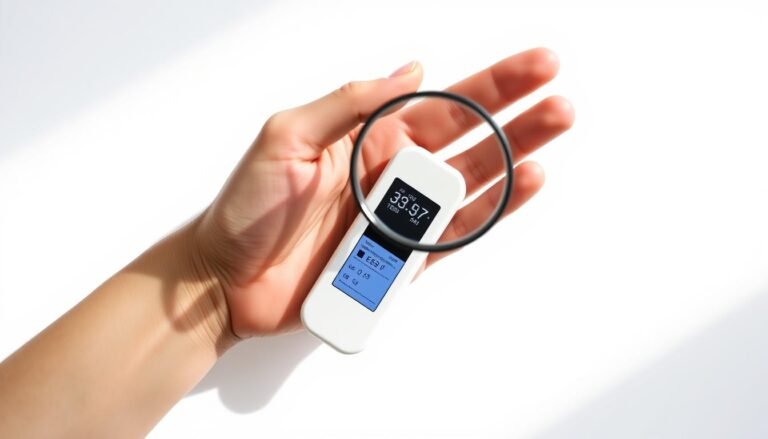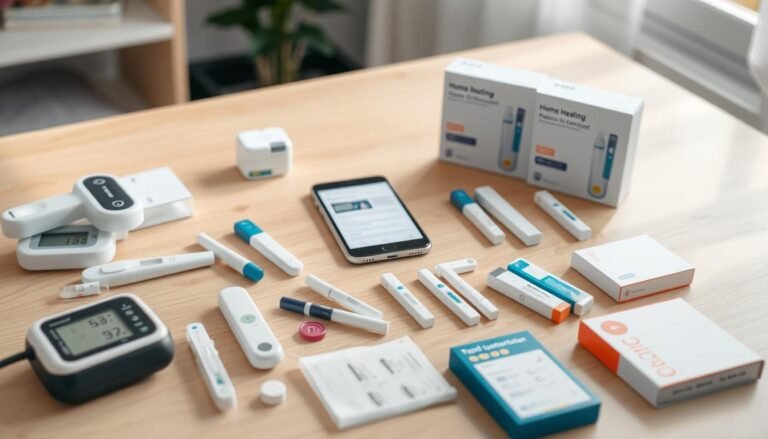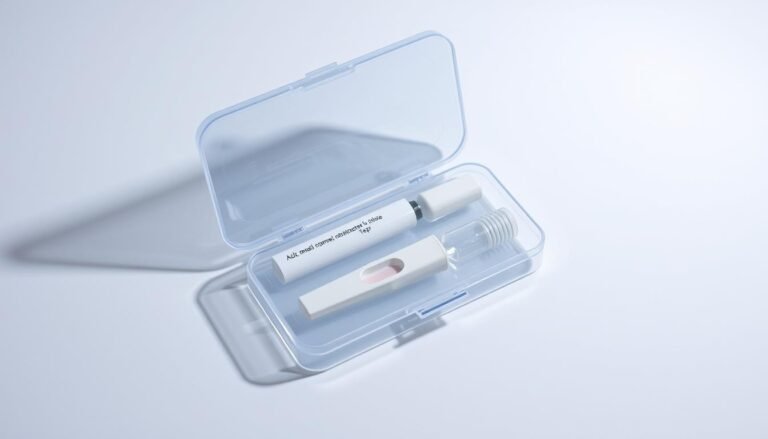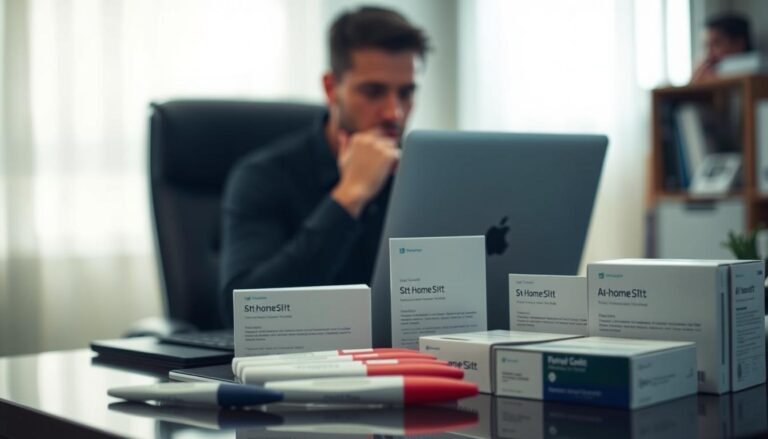DIY Health Screening: 15 Tests You Can Safely Do at Home
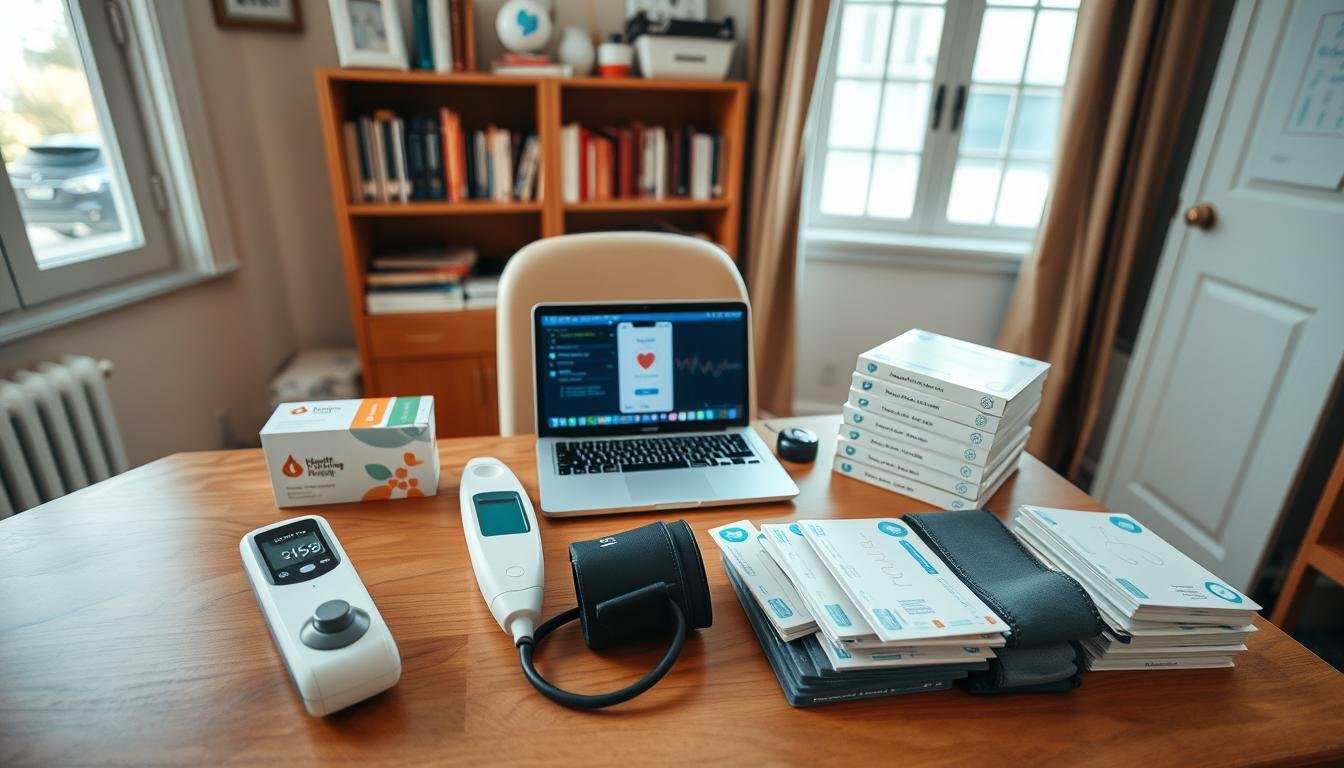
What small checks at home could spot a change before it becomes serious?
We introduce simple, science-informed checks you can do in our living room to help keep everyday health on track between visits. These low-cost tests — from a door-frame line for the eye to the draw-a-clock for cognition and the sitting-rising score for mobility — are practical ways to notice shifts in our body.
We explain when a quick result is just informative and when it should prompt an appointment with a doctor or physician. Simple tools like blood pressure monitors, glucose meters, thermometers, and a consistent clocked routine make these checks meaningful.
Across heart, lungs, brain, skin, and balance, we outline 15 easy moves and signs — palmar crease paleness, the Phalen maneuver, a paper-on-hand tremor test, and a stair talk test — that help our family take a look at key signals. These steps complement, not replace, professional care and point out clear red flags for prompt follow-up.
Why at-home checks matter between preventive visits
Regular quick checks at home help us spot small shifts in our body long before a clinic visit. These simple measures act as an early screening that flags patterns rather than one-off numbers.
High blood pressure often has no clear symptoms, so taking readings at the same time each day while at rest matters. Tests like a timed stair climb while speaking can show combined heart and lung fitness and reveal changes over time.
Keep a brief log of what we’re experiencing and the numbers we record. A single odd result is less meaningful than a trend. Sharing this log at an appointment helps our physician see the full picture and guides decisions on treatment or further testing.
| What to check | Why it matters | When to tell the physician |
|---|---|---|
| Blood pressure | Often silent; detects hypertension risk | Repeated high readings or readings >160/100 |
| Stair climb talk test | Shows combined heart and lung capacity | Shortness of breath or new chest tightness |
| Daily symptoms log | Captures subtle, changing signs | New dizziness, fainting, or sustained changes |
| Home pulse/step count | Tracks fitness and recovery over time | Marked drop in activity tolerance |
Simple, routine checks empower our family to reduce risk and make clinic time more useful. They do not replace professional care, but they do help us act sooner when we’re experiencing warning signs.
Heart and circulation checks you can do today
Routine, low-effort checks give a snapshot of cardiovascular fitness we can track over time. These quick tests show how our heart and arteries manage everyday demands and point to when we should see doctor.
Walk the stairs while talking or singing to gauge heart and lung fitness
Climb one flight while speaking or singing. If you can’t finish a sentence or feel chest tightness, that disproportionate breathlessness is a red flag and raises risk of heart or lung disease.
Home blood pressure readings: know your numbers and timing
Sit rested, arm at heart level, and measure at the same time each day. Use a validated automatic cuff with the right size for accurate readings.
- Record date, time, reading, and notes on activity or stress so we can spot trends.
- Persistent high pressure over several days should prompt a visit to see doctor.
The pillow leg-elevation test to spot peripheral artery issues
Lie back and raise the legs about 45° for one minute. If the feet turn pale, lower them to dangle at 90° and note how long color returns. Slow return can indicate arterial narrowing and needs medical follow-up.
Toe-touch flexibility as a proxy for arterial elasticity
From a seated position, reach for your toes. Poor flexibility has been linked with stiffer arteries in studies, so this simple move gives one more way to reflect on vascular health alongside blood tests and pressure checks.
Simple at-home screens for diabetes and metabolic health
A few quick tests at home give practical insight into glucose control and nerve function. These checks help us spot trends that matter more than one-off numbers.
Glucose monitor and strips: keeping blood sugar in target range
Wash hands, use a fresh strip, and place a drop of blood on the strip per the meter instructions. Log each reading with context: meal, activity, and time of day.
Clinicians set realistic target ranges for us. Consistent patterns over weeks guide decisions more than a single value.
Pencil-to-foot sensation check for diabetic neuropathy
With a partner, gently touch each toe with a pencil point and the eraser. Compare sharp versus dull sensation.
Reduced ability to tell the difference can indicate nerve damage and should prompt formal tests with our physician.
Dizziness on standing: low blood pressure, dehydration, or anemia?
From sitting, stand and note lightheadedness for one minute. Frequent dizziness on standing can point to low pressure, dehydration, or low hemoglobin and needs review.
- Log readings and symptoms so trends are clear at the next visit.
- Report vision changes, slow-healing foot wounds, or repeated low sugar right away.
| At-home test | What it shows | When to see physician |
|---|---|---|
| Finger-prick glucose | Daily glucose patterns, risk of complications | Repeated out-of-range readings or hypoglycemia |
| Pencil point foot test | Loss of sharp/dull sensation—early neuropathy | Any loss of feeling or foot wounds |
| Orthostatic check | Lightheadedness indicating pressure or anemia | Persistent dizziness on standing |
Brain health and memory: quick cognitive self-checks
A few brief tasks at home can reveal shifts in memory, planning, or spatial sense. These simple checks help us decide when to seek care and when to monitor patterns over weeks.
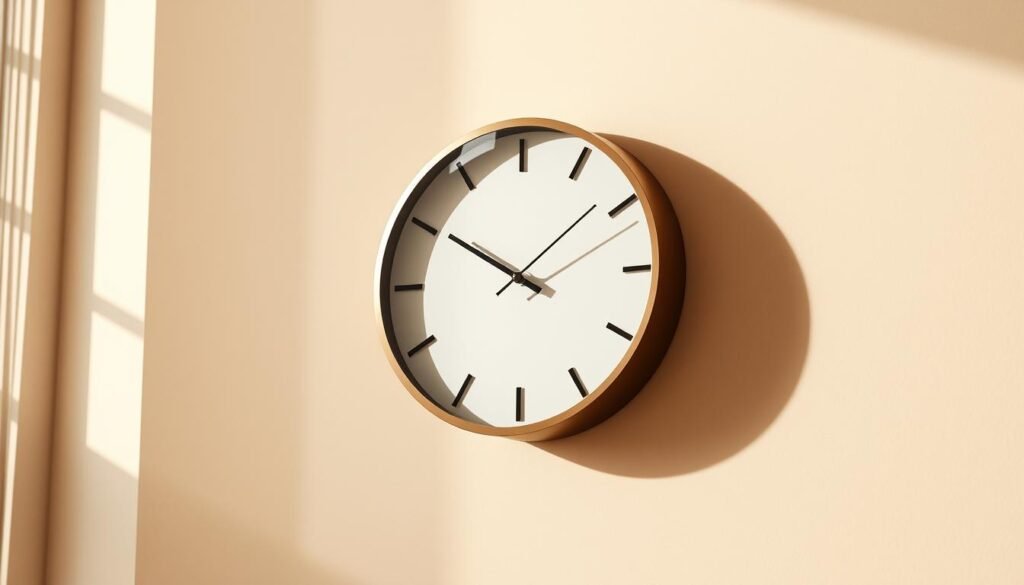
Draw-a-clock test to flag visuospatial and executive issues
Ask one person to draw a clock showing a specific time. We look for missing numbers, crowded digits, or wrong hand placement.
Errors may suggest problems with visuospatial skills or executive function. If we notice consistent mistakes, we should share the drawing with our physician for follow-up.
Try the SAGE self-administered cognitive test
The SAGE from Ohio State Wexner covers orientation, language, reasoning, visuospatial tasks, and memory. It takes under 15 minutes and can be done at home.
Completing and printing the result gives a fuller snapshot to bring to an appointment. Trends over months matter more than a single result.
One-leg balance: what shorter times may mean
Stand near a chair or wall for safety and time how long we balance on one leg, up to 60 seconds. Many older adults who could not hold 20 seconds had cerebral microbleeds in a Japanese Stroke journal study — a marker tied to stroke and dementia risk.
Short balance times warrant discussion with a physician, especially if paired with memory or speech changes.
- Repeat these simple tests periodically to track change.
- Use results as a prompt, not a diagnosis, and bring printed copies to clinic visits.
| Test | What it checks | When to see physician |
|---|---|---|
| Clock drawing | Visuospatial & executive function | Repeated errors or sudden change |
| SAGE | Multi-domain cognitive snapshot | Low score or declining trend |
| One-leg balance | Balance; possible microvascular brain changes | Unable to hold 20 seconds or less |
Hands-on health: anemia, tremor, and wrist nerve checks
Hands offer clear clues: pallor, subtle shaking, or tingling can point to treatable problems. These quick checks help us decide when to order lab tests or see a physician.
Pale creases in the palm as a sign of low hemoglobin
Turn the palm up and fully extend the fingers. If the palmar creases look unusually pale regardless of skin tone, this may be a sign of anemia.
This simple sign should prompt a complete blood count to confirm low blood levels and guide treatment.
Paper-on-hands to amplify subtle tremor
Hold both hands out, palms down. Place a piece paper on the backs of the hands.
Watch the paper for visible vibration. Small tremors can suggest thyroid changes or early neurological issues and deserve follow-up tests if persistent.
The Phalen maneuver for wrist nerve symptoms
Press the backs of our hands together with fingers pointing down and elbows extended. Hold 30–60 seconds.
Tingling or burning in the thumb, index, middle, or inner ring finger suggests median nerve compression and possible carpal tunnel.
- Seek immediate care for worsening weakness, severe numbness, or sleep-disrupting pain.
- Schedule an appointment with a physician for nerve testing and treatment if symptoms continue.
- Try ergonomic changes and brief activity modification while awaiting evaluation to reduce strain on our hands.
Eyes and skin: quick visual screenings without an appointment
Small, focused visual checks can flag changes before they affect daily life. We can do these fast at home and use the results to decide whether to take a look with a clinician.
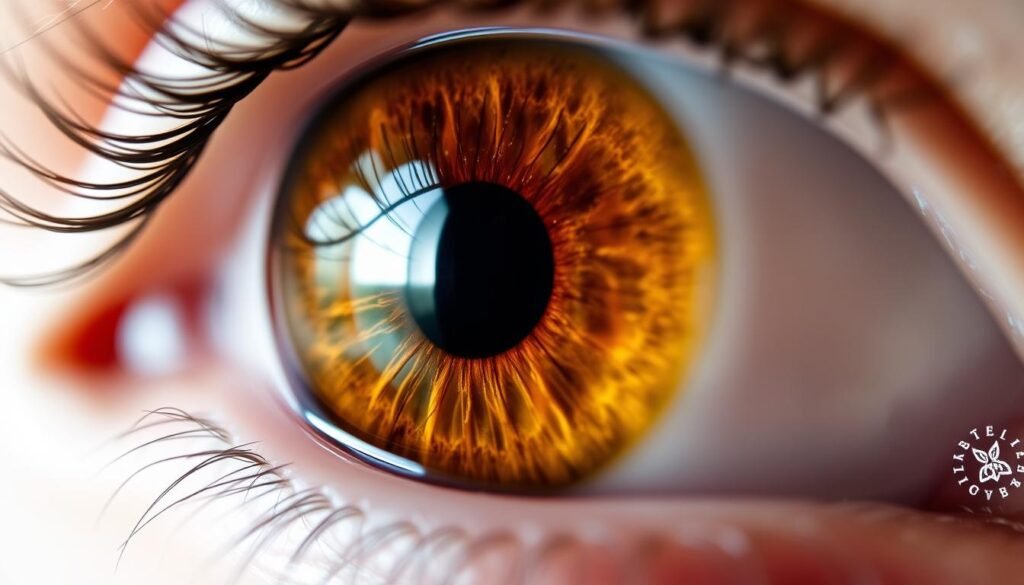
The door-frame line test to spot vision changes
Stand about 10 feet from a closed door and focus on the frame’s vertical and horizontal lines. Cover one eye for 30 seconds, then the other.
If lines look wavy, distorted, or parts seem missing, that is a possible sign of retinal change or other eye disease that needs timely evaluation.
Use the ABCDE rule to check moles
Look for Asymmetry, irregular Border, varied Color, Diameter over 6 mm, or Evolving shape or size. We should check moles monthly and photograph any worry spots in consistent light for comparison.
- Escalate for sudden vision change, new flashes or floaters, or a rapidly changing mole—do not wait for a routine appointment.
- Use sun protection, sunglasses, and routine eye exams to complement home checks.
| Quick test | What it flags | When to see clinician |
|---|---|---|
| Door-frame line test | Distortion or missing lines—retinal issues | Sudden waviness, blurring, or new blind spot |
| ABCDE mole check | Skin lesion changes that suggest cancer | Mole growing, changing color, or bleeding |
| Photographing spots | Document evolution over weeks | Visible change on comparison photos |
DIY health screening tools and fitness self-tests to track over time
A few reliable devices and repeatable tests give clear, actionable data about our body’s daily function.
Start with three core tools: an automatic arm blood pressure monitor, a digital thermometer, and a heart-rate sensor or wearable. Choose validated devices with multiple-user memory so our readings and numbers stay linked to the right person.
Home devices: blood pressure monitors, thermometers, and heart rate trackers
Take blood pressure at rest, same time each day, and log the reading. Wearable trackers or chest straps show exercise intensity and help tailor fitness plans.
Chair stands and sit-to-stand speed for strength and endurance
Time five chair-to-stand repetitions. Slower reps signal reduced lower-body strength and lower cardiorespiratory fitness, which we can work on before symptoms appear.
Sitting-rising test: flexibility, balance, and longevity insight
The sitting-rising test scores out of 10. We lose points for using hands, knees, or wobbling. Lower scores often reflect gaps in flexibility, balance, and power.
Select at-home kits wisely for common conditions
At-home kits range from urine dipsticks for UTI to rapid saliva HIV tests that give results in about 20 minutes. A positive point-of-care result needs clinical confirmation and treatment.
- When to see doctor: repeated high pressure readings, unexplained fevers, or abnormal resting heart rates.
- Keep a weekly log of device readings and mobility tests to track progress and reduce risk.
| Tool / Test | What it shows | When to seek care |
|---|---|---|
| Automatic arm blood pressure monitor | Daily pressure patterns and hypertension risk | Repeated high readings or readings >160/100 |
| Chair-to-stand (5 reps) | Lower-body strength and endurance | Marked slowing or inability to complete reps |
| Sitting-rising test (SRT) | Balance, flexibility, overall functional fitness | Low score with frequent falls or instability |
| At-home UTI/HIV kits | Rapid point-of-care screening | Positive result—confirm with clinic testing |
Conclusion
A short, steady routine of simple tests helps us notice trends before symptoms force a clinic visit.
Choose two or three checks to do each week — for example, a rested blood pressure reading, a chair-stand session, and a clock drawing. Record date, time, and numbers so patterns are clear.
Act now for repeated high blood pressure, new weakness or numbness, rapidly changing moles, sudden vision change, persistent dizziness on standing, or clear palmar crease pallor that suggests low blood or anemia.
Trends across heart, arteries, skin, eye, hands, feet, and memory matter more than any single point-in-time result. Share concise logs and paper tests like clock drawings with our doctor or physician to guide timely care.
Use simple tools — a cuff, a piece of paper, and a pencil — to lower risk and catch disease or dementia early.
